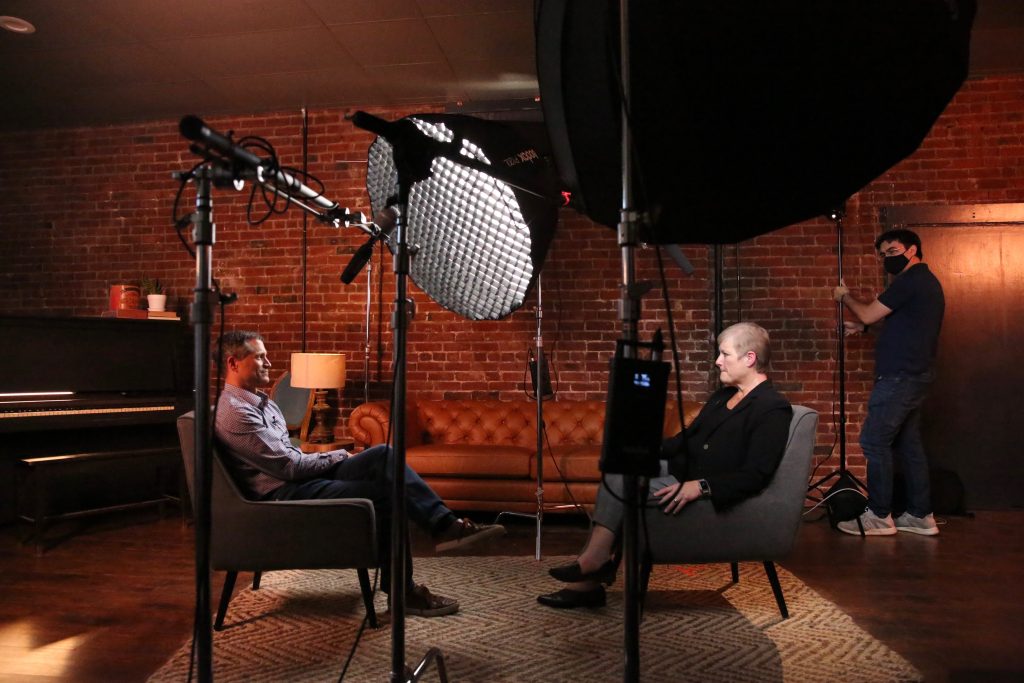
Friday September 2, 2022
How to successfully pitch stories to broadcast media (Radio & TV)
Coverage in broadcast media is the Holy Grail for any PR expert. But pitching to producers and reporters can be a mammoth task, given the frantic deadlines and ever-changing news agenda.
Follow our top tips for how you can score a PR win for your clients by successfully pitching to broadcast media.
Do your prep
Before you even begin pitching, make sure you have all the information you need. Assess your spokesperson’s availability and readiness for a broadcast opportunity. They may need to be available for an interview at extremely short notice. They will also need to be rigorously briefed on possible questions and talking points, as there is no room to change what you want to say once the interview has been recorded.
Get a list of other people who are willing to be interviewed, both so that you can provide comments from all angles and in case your spokesperson is not available for interviews.
Make sure your pitch is strong enough to make a journalist sit up and take notice. It will need to emphasise a human interest angle, provide meaningful statistics or present a totally new or different take on an issue. What it can’t be is fluffy.
Is your spokesperson media trained? If not, provide them with media training as this will make all the difference to how confident they feel when going into the interview.
Make your pitch visual if you can. If you already have a showreel of your spokesperson being interviewed, include it. If not, still images will still help bring your pitch to life.
Make your story visual
While print and online media may have more of an appetite for complex statistics and in-depth analyses, many broadcast media focus more on the visual or narrative aspects of a story.
Statistics and hard facts are important. But an image or a short video clip showing, for example, how your product has transformed the market can be even more powerful.
A radio station may publish your images or videos on their website — don’t automatically assume it’s just an audio-led platform. Even if they don’t, presenters like to describe the story in vivid detail so that their listeners can visualise it in their heads. Videos and images can help them get a sense of how they can describe your products or present your story.
TV stations will always appreciate any footage you can provide, as it will give them a sense of what your spokesperson is like on camera and tell them a fuller story of the product or service in question.
Keep your pitch concise, but don’t shy away from describing who reporters can interview, why they’d want to, and what fun activities or scenic spots are open for filming or recording.
Tailor your pitch
This is basic, but vital. Write a pitch that ties your story into the current news agenda and clearly explains why your client’s product or event is relevant now. Peg your story wherever possible to a news item that is trending, or a major upcoming holiday or observance. Whatever you do, though, don’t leave it too late, or everyone else will get in there first. You have to be the first to strike for maximum impact, so keep your eyes peeled on the news!
An important note to bear in mind: if you are pitching to regional TV or radio stations, it is crucial to show how the story ties in to their geographical area. Regional media just won’t be interested in stories outside their area.
Depending on the volume of your media outreach, customising your pitch down to the last detail may be difficult. It is fine to keep 90% of your pitch the same across your outreach, provided you fine tune the other 10% using the tips mentioned above.
Beginning your media outreach
You’ve briefed your spokesperson, and written and customised the pitch. It’s time to begin the outreach.
Unless you know someone already at the outlet, it may be better to pitch the planning desk rather than individual producers. The inbox of the planning desk is monitored by multiple producers and broadcasters throughout the day, meaning that your pitch has less chance of getting lost in someone’s inbox.
The staff at planning desks are also on top of open slots and staff availability. An individual reporter may have already been assigned stories to cover, but the staff at the planning desk will know who else to assign. Producers have the final say on what stories get covered, so successfully capturing their interest would increase the chances of securing coverage.
Try to keep as long a lead-in time as possible. Many segments get booked weeks, if not months, in advance.
If you do have a previous relationship with a reporter or producer, it may be worth pitching them over the phone. Broadcast journalists tend to be on the move and work irregular hours, so they are often more open to receiving a phone call.
Be sure to follow-up one or two times, ideally within a week, as your email could have got pushed further down the inbox. Keep your follow-up short and sweet.
There may be times you are able to successfully generate a lead — only for the reporter or the producer to cancel at the last minute. Don’t be dejected; chances are they had to reassign resources for another story.
Last-minute changes are the norm with broadcast media, so thorough prior preparation can help you salvage an opportunity. Go back to all the information you prepared beforehand and try to pitch another date or story that the outlet can cover. With some luck and coordination, you may yet be able to get your client on air.
Curzon PR is a London-based PR firm working with clients globally. If you have any questions, please feel free to contact our Business Development Team bd@curzonpr.com






Follow us